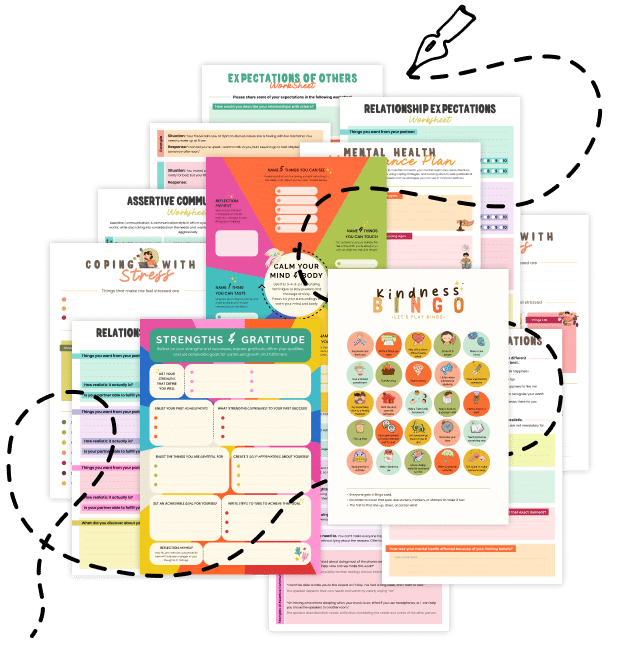20 Things You Should Know About Anxiety Reappraisal
Transform your anxious energy into a powerful ally with these 20 insights on Anxiety Reappraisal—what it is, why it matters, and how to master the art of turning fear into fuel for success.
1. What Is Anxiety Reappraisal?
Anxiety Reappraisal is the practice of reframing anxious feelings as excitement, readiness, or motivation rather than distress. Instead of fighting the butterflies in your stomach, you learn to harness that energy to your advantage.
2. A Shift in Perspective
Reappraisal doesn’t eliminate anxiety; it changes your lens. By labeling your body’s stress signals as positive—like “I’m pumped” instead of “I’m freaking out”—you set the stage for better performance and emotional balance.
3. The Science Behind Anxiety Reappraisal
Studies show that interpreting anxiety as excitement can improve test scores, speech delivery, and task persistence. A simple mindset shift influences your physiology—helping your body channel adrenaline more effectively.
4. Related to Mindset Theory
Anxiety Reappraisal draws on the idea that beliefs shape outcomes. If you believe your racing heart is a sign of readiness rather than panic, you’re more likely to stay calm and focused under pressure.
5. How Anxiety Reappraisal Helps Performance
From job interviews to public speaking, reappraising anxiety as excitement often results in more confident, engaging deliveries. High arousal becomes a propelling force rather than a paralyzing one.
6. Emotion vs. Interpretation
Anxiety reappraisal taps into the difference between having an emotion and interpreting it. We can’t always stop anxious feelings, but we can choose how to label and direct them.
7. Brain’s Role in Reappraisal
Regions like the prefrontal cortex help you consciously reframe how you see internal cues (like a racing heart). Over time, this self-talk can physically alter neural pathways linked to stress responses.
8. A Tool for Daily Stress
It’s not just for big events. You can use reappraisal techniques when stuck in traffic, facing a tight deadline, or dealing with an unexpected conflict—any scenario triggering worry or dread.
9. Connection to Confidence
By telling yourself “I’m eager” or “I’m motivated,” you boost self-assurance. This active reframing fosters a sense of control, making challenges feel more like opportunities.
10. Complement to Relaxation
Reappraisal doesn’t replace relaxation exercises—it complements them. Calming breathing or mindfulness sets the stage, while reframing helps maintain an empowered outlook.
11. Anxiety Reappraisal Role in Social Situations
Anxiety reappraisal can reduce social jitters. By shifting nervous energy into enthusiasm—“I’m curious to meet new people!”—you engage more authentically, making others feel at ease too.
12. Breaking the Avoidance Cycle
Fear often leads to avoidance. Reappraising anxious signals lets you approach difficult tasks instead of running away. Confronting challenges builds resilience and reduces the hold anxiety has on you.
13. Leveraging Positive Self-Talk
By repeating phrases like “This is excitement” or “My body is getting ready to excel,” you gradually rewire knee-jerk reactions. Over time, these affirmations become more natural and convincing.
14. Connection to Goal Achievement
Athletes, public figures, and top performers often utilize reappraisal to keep their eyes on the prize. Turning nerves into fuel aligns your emotions with your objectives, creating a clear path to success.
15. It’s a Learnable Skill
Not feeling it yet? Don’t worry—it takes practice. Start small by reappraising mild stressors, then work your way up to higher-stakes events once you gain confidence in the technique.
16. A Buffer Against Panic
When you sense a panic spiral coming, reappraisal can interrupt catastrophic thinking. By consciously labeling your heart pounding as “My body preparing,” you can stop a full-blown panic attack before it escalates.
17. Cultural and Personal Variations
Everyone experiences anxiety differently, influenced by culture, upbringing, and personal coping styles. Tailor reappraisal statements that resonate with you, whether that’s “I’m excited,” “I’m ready,” or “I’m prepared.”
18. Merge with Other Therapies
Reappraisal fits well with CBT (Cognitive Behavioral Therapy), mindfulness training, or exposure therapy. Combining tools enhances emotional flexibility and problem-solving skills.
19. Limitations and Balance
Reappraisal doesn’t solve chronic anxiety disorders on its own—professional guidance may be needed. It’s one strategy in a broader toolbox for managing stress, worry, or panic.
20. Related Topics to Explore
- Cognitive Defusion: Learn to detach from unhelpful thoughts, strengthening your ability to reframe anxiety.
- Psychological Flexibility: Cultivate the capacity to pivot from negative to constructive emotions on the fly.
- Self-Handicapping Behaviors: Spot ways you might sabotage your own performance due to anxiety.
- Grit Priming: Build persistence and resilience—foundation stones for effective reappraisal.
Quick Tips to Boost Anxiety Reappraisal
- Name the Feeling: Simply saying “I’m feeling anxious… or is it excitement?” can loosen anxiety’s grip.
- Use Energizing Language: Swap “I’m scared” with “I’m pumped” or “I’m ready to shine.”
- Pair with Deep Breaths: Calm your body first, then shift your thoughts—both steps reinforce each other.
- Practice in Safe Settings: Try reappraisal with mild jitters (like trying a new hobby) before bigger events.
- Celebrate Small Wins: Each time you successfully reframe anxiety, acknowledge that victory to build confidence.
Anxiety Reappraisal shows that how you label emotional arousal can dramatically change its impact. By consciously viewing nervousness as a sign of readiness rather than a roadblock, you shift from paralyzing fear to productive energy. Share this article with friends, family, or colleagues—help them discover the powerful art of reappraisal for a calmer, more confident approach to life’s challenges!


